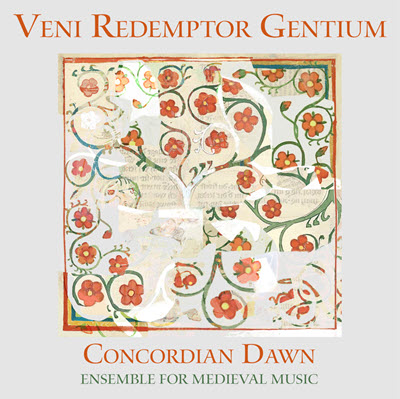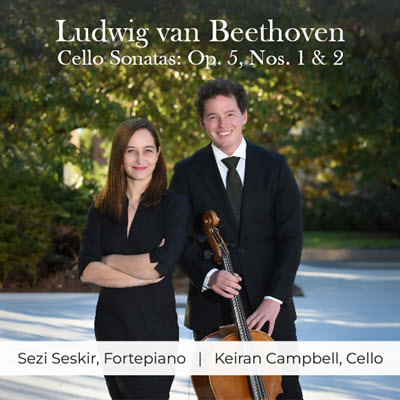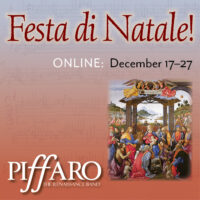by Karen M. Cook
Published July 6, 2025
Vox Feminae, Les Kapsber’girls. Alpha Classics Alpha 1098
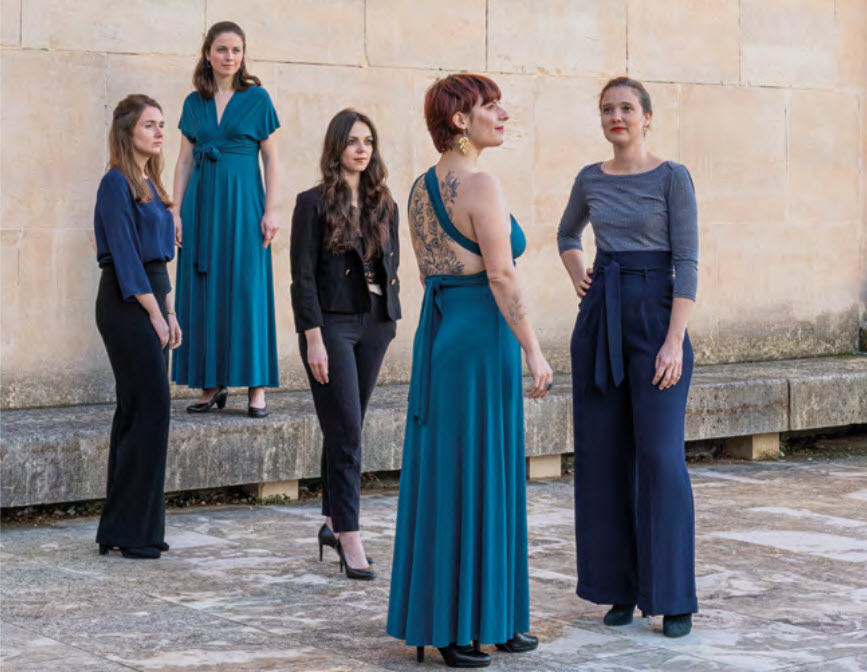
Founded in 2015, Les Kapsber’girls take their punning name from the composer and lutenist Hieronymus Kapsberger (1580-1615). While the French vocal and instrumental ensemble, led by lutenist Albane Imbs, paid tribute to their namesake on their first album (2020’s Che fai tù?), they have not since confined themselves just to his output but have instead explored a wide range of repertory from across the 17th and 18th centuries.
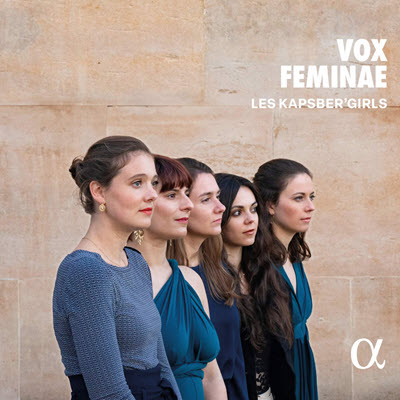
On this, their third and latest album, the ensemble both returns to their Kapsbergerian roots and expands outward to new territory: his female contemporaries. As they explain in their brief liner notes, this intentional shift is meant to highlight the women whose works were fortunate enough to be preserved in some fashion (a rarer incidence than for the more numerous male composers of the day), as well as to supplement and support the scholarly work being done to bring these women and their works to light.
To that end, Vox Feminae presents an array of vocal works by Italian women composers from all walks of life and levels of fame. The album begins with Barbara Strozzi’s duet “Mercè di voi” — an apt choice, given that it also opens Strozzi’s first book of madrigals, and its line about flying “among the blessed choirs, crowned with laurels of immortality” gestures poetically to the other female composers represented here, especially the lesser-known Francesca Campana and Lucia Quinciani. Works by Antonia Bembo, Isabella Leonarda, and Francesca Caccini round out the album, with instrumental pieces by Kapsberger and Ercole Pasquini interspersed throughout.
The program is well conceived and well designed; there’s a nice contrast in style and affect among the vocal works, while the instrumental ensemble provides an excellent sense of continuity throughout. But the instrumental works are hardly filler: the pizzicato dances, in fact, are a highlight of the recording, especially given the inclusion of the triple harp. The acoustic suits the gentler instrumental works beautifully; all registers and timbres are so clearly audible that it makes you feel like you’re standing inside the ensemble itself. And the opening to Bembo’s “In amor ci vuol ardir” is vivacious, rich, and fun, with the vocalists lending the entire work a really engaging sense of live-ness.
It certainly seems to depict the sense of screwing one’s courage to the sticking point signaled in the text. Leonarda’s textual call to arms in “Ad arma, o spiritus” is mimicked musically to great effect here. Strozzi’s “Che si può fare?” is a real standout for its lovely sense of pathos, which is also on display in Bembo’s “Habbi pietà di me” and particularly in the sensitive deployment of trills in Quinciani’s “Udite lagrimosi spiriti d’Auverno.” The piece I found myself returning to was Caccini’s “Ch’amor sio nudo”—the vocal runs here were splendidly coy and inviting. It’s an interesting choice to end on Kapsberger’s “Gagliarda sesta,” instead of a rousing vocal number, but it might just make you put the album on again to hear the voices return in the opening Strozzi.
The ensemble has already won several prestigious awards, as well as international acclaim at festivals and concerts alike, and, on this recording, it’s easy to see why. I look forward to hearing more from them in the future.
Karen M. Cook is associate professor of music history at the University of Hartford. She specializes in late-medieval music theory and notation, focusing on developments in rhythmic duration. She also maintains a primary interest in musical medievalism in contemporary media, particularly video games. For EMA, she recently reviewed A Monk’s Life.

